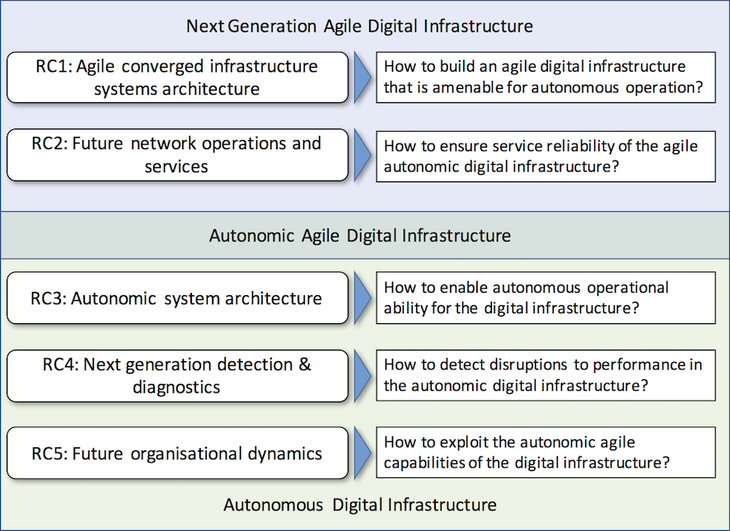Next Generation Converged Digital Infrastructure (NG-CDI)
Background
This £5M EPSRC and BT Prosperity Partnership was a collaborative partnership with the Universities of Lancaster, Bristol, Cambridge and Surrey and BT.
Developments such as 5G, virtual reality and self-driving vehicles required a radical shift in the way our networks perform and the way they are maintained. Demands on the current infrastructure are extremely high both in capacity and given the range of services offered. In line with this, the team aimed to develop a future network that is “autonomic”, with the capability to react and even predict changes in networking demand, reconfiguring infrastructure accordingly with minimal human intervention. This will lead to new services, improved customer experiences in terms of network reliability, and greater agility for businesses which need digital services that can adapt as they grow with resilience to future demands.
Challenges addressed
The research carried out in this programme was structured around 5 challenges:

Our work focussed on research challenges 3 and 5.
Research Challenge 3 entailed the development of an architecture for control of the network of service & communications nodes. Drawing from knowledge and experience in the domains of cyber-physical systems and industrial internet of things, a blueprint of the autonomic system in which software agents mirror or twin with physical nodes was developed. Further, this RC examined issues related to agent communication including the quality of data and any trade-offs that exist between better data quality and ensuing costs. A novel technique involving intelligent data, where data is made to seek the user instead of user seeking data was explored in addressing this challenge.
Research Challenge 5 examined how to bring these capabilities together to improve organisational performance through improved service assurance and enhancing organisational capabilities. There were two major focus areas for this RC: (i) to apply the models and building blocks in specific use-cases to show how the organisation could leverage the technologies for enhancing service assurance; (ii) to explore the challenges involved in the transition from technology development to business adoption. RC5 developed techniques to enable autonomous decision-making for two scenarios – redeployment of functions amongst the nodes based on service risk, and improving service performance through predictive maintenance and spares management. In addition, this RC examined issues regarding governance and risk management, translating organisational policy to service levels, and the impact of autonomics on organisational culture.
More information about the project can be found here.
People
- Ajith Parlikad
- Duncan McFarlane
- Amit Kumar Jain
- Manuel Herrera
- Marco Perez Hernandez
- Alena Puchkova
- Maharshi Dhada
Project Partners
- BT
- Lancaster University
- University of Bristol
- University of Surrey









